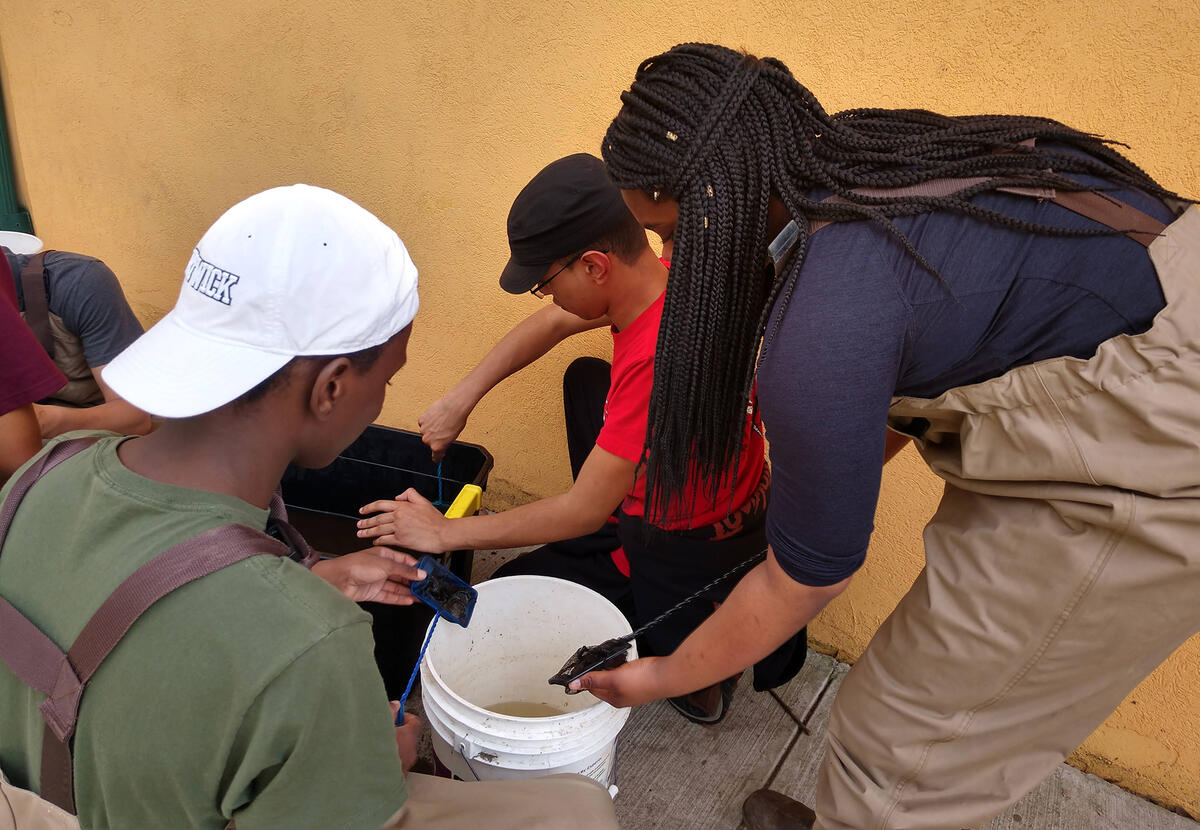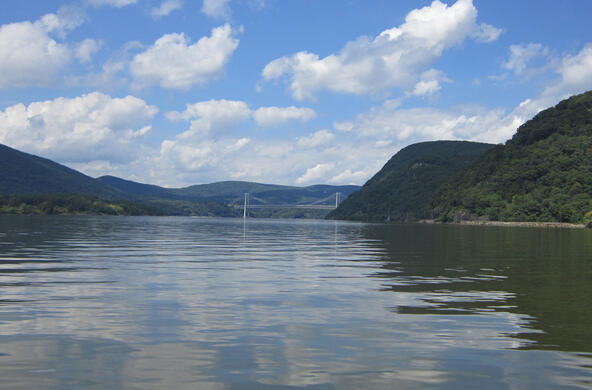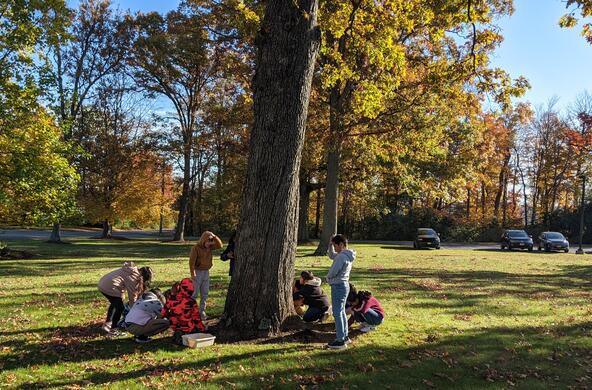Across the United States, there’s a growing disconnect between young people and nature, particularly in urban environments. In Poughkeepsie, NY a community science project that sends high school students wading into the Hudson River to monitor an endangered eel species is helping to bridge that divide.
“Cary freshwater ecologist Dave Strayer always framed the Hudson River as the rainforest of the Northeastern rivers,” said environmental educator Lia Harris, a visiting scientist with Cary Institute of Ecosystem Studies. “I've done a number of activities over the years to try and highlight how cool this river is and how much life there is in it.”
One of those activities included getting involved with the Hudson River Eel Project, which tracks the endangered American eel’s spring migration up the Hudson. Harris was first contracted to evaluate the project, run by New York State's Department of Environmental Conservation, when she worked at Cary Institute. Over time, she noticed that “the students’ language changed as they came to the creek, and the way they talked to each other, talked about the eels, and their excitement. They chose to continue coming, sometimes for multiple years. So that, to me, indicated something else was going on.”
That “something else” was that they were forming new connections with the ecosystems around them, according to Harris’s research. In a study published in June in the Journal of Environmental Education, she and her co-authors suggest that the Hudson River Eel Project helped the students develop positive feelings about their local environment, and changed how they thought about the river, its ecosystems, and its connections to their own lives and communities.

“We are convinced that giving all people the opportunity to understand and form emotional connections to their place is both a worthy goal from an equity standpoint, and a vital part of moving our society towards a more sustainable relationship with the environment,” said co-author Alan Berkowitz, head of education at Cary Institute. “We know that many urban students don’t have these kinds of opportunities. We also know that some kinds of citizen science programs can provide an entree into this arena.”
The study interviewed and observed 10 students from Poughkeepsie High School before and after they participated in the Hudson River Eel Project. As part of the project, the students would wade into the Fallkill Creek where it meets the Hudson and deploy a net to collect migrating young eels. The students then weighed, measured, and counted the eels before returning them to the creek.
Coordinated by the New York State Department of Environmental Conservation, volunteers for the Hudson River Eel Project collect data along streams throughout the Hudson River estuary during the eels’ spring migration. Since it began in 2008 with two monitoring sites, the project has expanded to 14 sites and more than 750 volunteers annually; in 2022, there were 556 youth and 381 adult volunteers. The data help to reveal whether the population is recovering and if fishing restrictions can be changed. So far, there seems to be a slight upward trend.
Harris calls the glass eels charismatic. “Their journey is miraculous,” she says. “I think any thousand-mile journey that any creature takes without their phones is pretty stunning. And they're so small, and they do this all on their own.”

Before participating in the project, most of the students had no idea that an endangered eel was migrating through their city. “I knew they existed somewhere in the globe, but not here,” said a student named James, quoted in the paper.
In fact, the researchers’ interviews showed that the students’ knowledge of the Hudson in general was quite superficial at the outset of the project. For them, the river was a scenic backdrop or a place to hang out.
For most, the project marked the first time they had ever been in the river. Over time, they witnessed its physical changes, such as color, velocity, and tides, which sometimes made the water ankle deep and other times made it waist deep.
Over the two-month project, the students began to notice more details about the eels, such as their gills and heartbeats, as well as other aspects of the river’s food web, including the grackles that came to the river to eat the eels.
The project helped the students recognize the presence of a unique organism in their community. “[N]ow that I’ve gotten to see and touch them they’re a lot smaller than I thought,” said one student named Holly. “I thought they would electrocute people, but picking them up, they’re cute and they’re tiny and they’re gentle.”
After the project, students were more likely to talk about how they cared about the creek, the eels, and the river. They talked about picking up trash so that it wouldn’t wash into the creek.
As part of the interview process, the students were asked to draw the sampling area before and after the project. After participating in the eel count, the students made more detailed drawings, and the number of students who included the creek in their drawings doubled.

To Harris and her colleagues, these changes indicated that the students’ relationship with their local environment had deepened, and that they were developing a sense of place.
“[Before,] it was just a body of water,” said one student, Nadine, “It was just there, but then now, it makes you think, what else could be in there, because there’s a whole bunch of things and species and fishes and then the eels, which I never thought there would be eels in the river, so it’s nice to know.”
Harris and her colleagues would like to see more programs like the Hudson River Eel Project, to help foster more equitable access to nature and to allow all students to develop deeper and more meaningful relationships with their local environment. From these local connections can stem more meaningful engagement on global issues, such as climate change.
Berkowitz said the study has helped to key in on which features make the Hudson River Eel Project so effective. “The eels are really engaging to the students, the teamwork and supportive adults play a key role, and the physical experience in the stream and with the eels is also important,” he said. “How these play out with different students gives valuable insights that can be applied to other programs and settings.”
This kind of outreach takes hard work and dedicated funding, Harris explained, but the sense of wonder and joy that it creates can be deeply meaningful.
“If we want youth to care about their place,” the study authors write, “they deserve to have the kinds of experiences that the Hudson Eel Project affords, where they can explore, splash, giggle, and gaze in awe at a miraculous, other-worldly creature that traveled hundreds of miles on an ocean current.”






